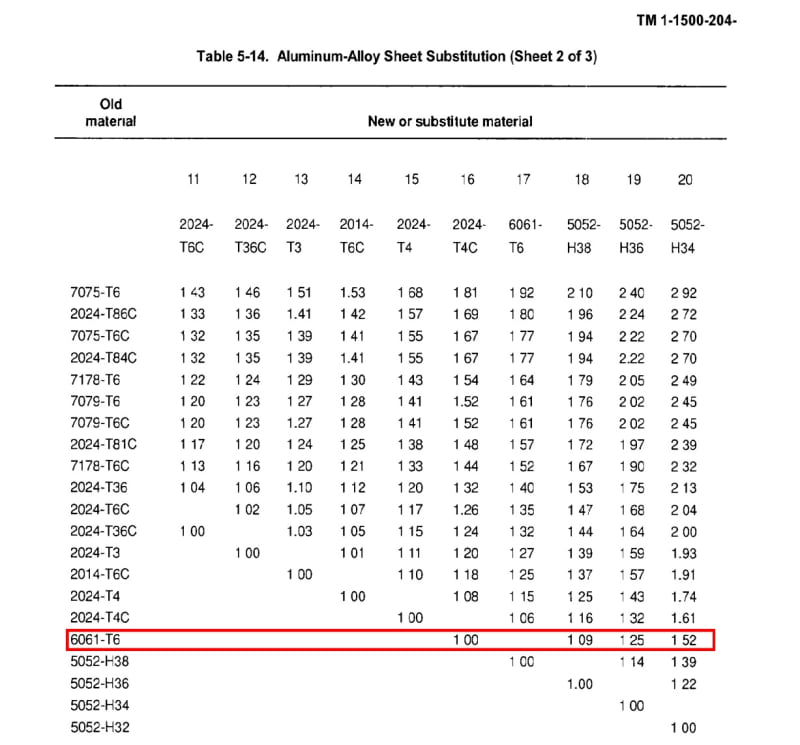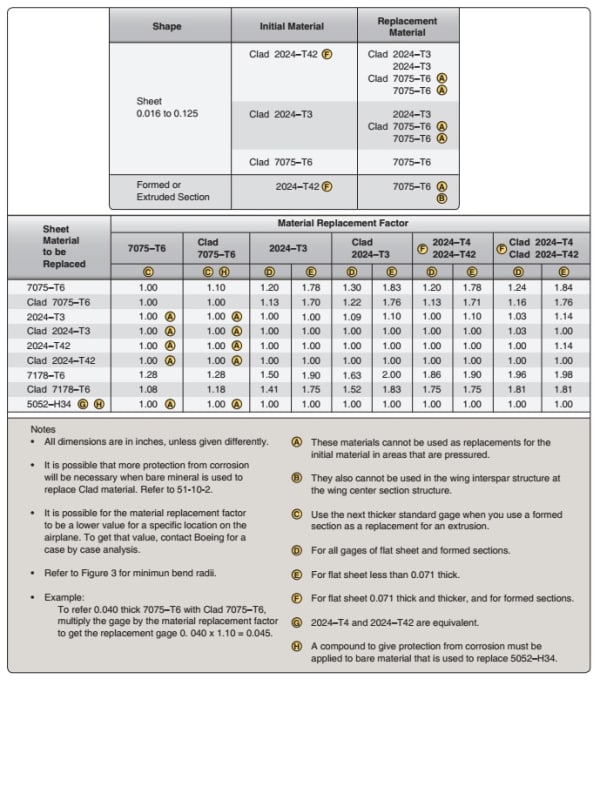Mash04
New member
- Dec 11, 2019
- 3
Hello,
Many materials or material product forms used to manufacture or maintain the original parts on today's vintage aircraft are no longer available or practical for reproduction to the original design data. To manufacture the needed parts requires materials or material product forms substitutions, such as substituting aircraft metals rarely used today with an equal to or improved material.I came across a technical manual (TM 1-1500-204-23-10)that had multiplication factors for various metals. Would anyone know who how they came up with the multiplication factors?
Link
See snippet from the TM and SRM in the attachment


Many materials or material product forms used to manufacture or maintain the original parts on today's vintage aircraft are no longer available or practical for reproduction to the original design data. To manufacture the needed parts requires materials or material product forms substitutions, such as substituting aircraft metals rarely used today with an equal to or improved material.I came across a technical manual (TM 1-1500-204-23-10)that had multiplication factors for various metals. Would anyone know who how they came up with the multiplication factors?
Link
See snippet from the TM and SRM in the attachment


